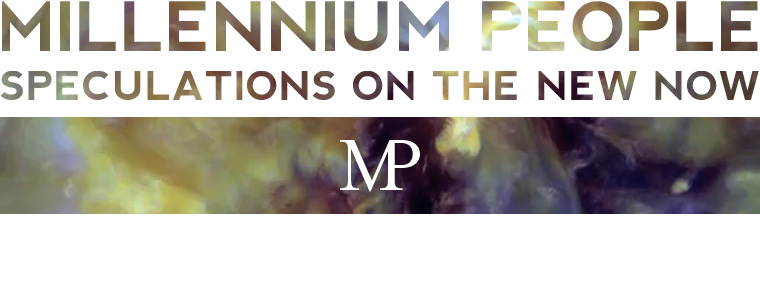He continues:
“‘My ultimate aim’, [Kuma] writes early on in his book, ‘is to “erase” architecture’. Such an ambition couldn’t be further removed from the majority of a younger generation of digital experiementalists today, pursuing a renewal of formalism not seen within architecture for decades.”As founder of the AADRL, and therefore one of the driving forces behind the pursuit of neo-formalism, and the advance of digital experimentalism, this comment is not without a certain hypocrisy. The younger generation are largely that way because Steele made them so. I am not making a value judgement about the worth of digital experimentalism (which has obviously been a tremendously important force in the recent history of global architecture), I am simply noting my surprise that Steele would distance himself from a movement he helped create.
+++++
In the first part, Max mostly focussed on the division of subject and object as proposed by Kuma’s text: the possibility of relating the subject to the landscape through the power of the floor plane, and the ability to blur formal boundaries of architecture by the ‘particlisation’ of materials and elements.
Both of these main points relate to Kuma’s definition of an object as being something wilfully separate from the ground plane – a finite figure cut off from the earth (as opposed to the earth itself, which is continuous in all directions and thus infinite). However, this definition also excludes burying a building. The new millennium fad of concealing buildings in the landscape by submerging them, or employing other mechanical modes for hiding their structure, does not actually change the nature of the building's limits (a wall is not less definitive because it is underground).
Max discussed what it isn’t, but what is an architectural object?
“Kuma sees new digital and informational technologies as leading us to an aesthetics of disappearance, rather than image or form” Steele notes. Images and forms are the current architectural stock-in-trade, and Kuma makes the historical reason for this quite clear: communication. At a period in Modernism when only black and white images were being published in grainy magazines, the architects that succeeded in drawing attention (and subsequently more projects) were those who could capture the essential forms of their buildings and diffuse them through B+W photographs (Barcelona Pavilion, Villa Savoye, etc). The legacy of this period is the ubiquity of the ‘metalevel’ image: an imagined point of view that portrays the whole building. This manner of viewing architecture necessarily renders it an object for consideration.
Bruno Taut, according to Kuma, lost out to rival Modernists because he “failed to understand the twentieth-century paradox, that individuals as isolated subjects shunned groups in any form. They were sustained in their mediocrity through the possession of attractive products.” Modern architecture became an 'attractive product' by appealing first to the spirit of domestic rivalry – the Modernist home was an object that could be packaged, sold, and used as a means to escape the mediocrity that was the inevitable result of the era of machine reproduction.
I mention the escape from mediocrity because Kuma lets us know that the architectural object is not, whatever Corbusier might argue, for the people. It is the production of one-of-a-kind jewels, founded on capital. It is the Burj Dubai, the Walt Disney Concert Hall, the Phaeno Science Museum, the Gherkin, and a million other projects – today with no exclusion of function or program.
From the text, I can only conclude this: the architectural object is full of form, but empty of meaning; found in one location, but conceived independently of place; sexy without being in the least bit seductive.

No comments:
Post a Comment